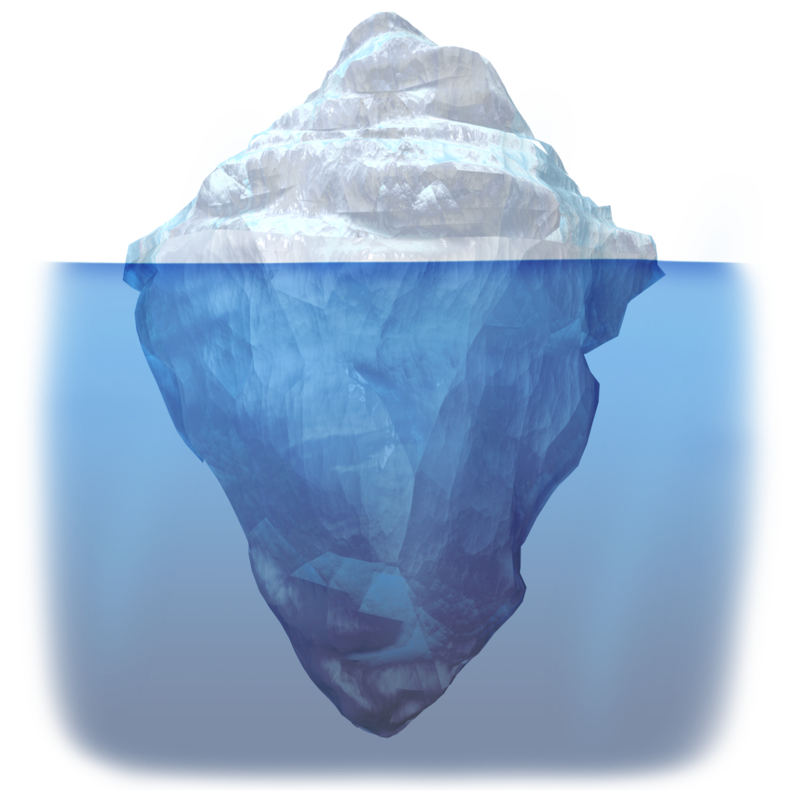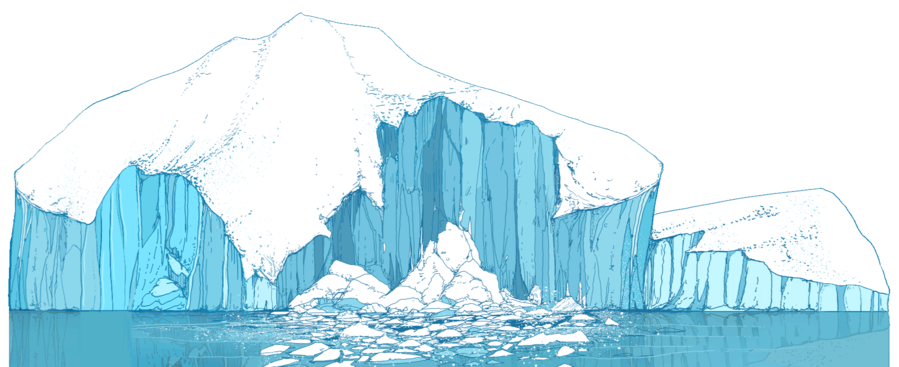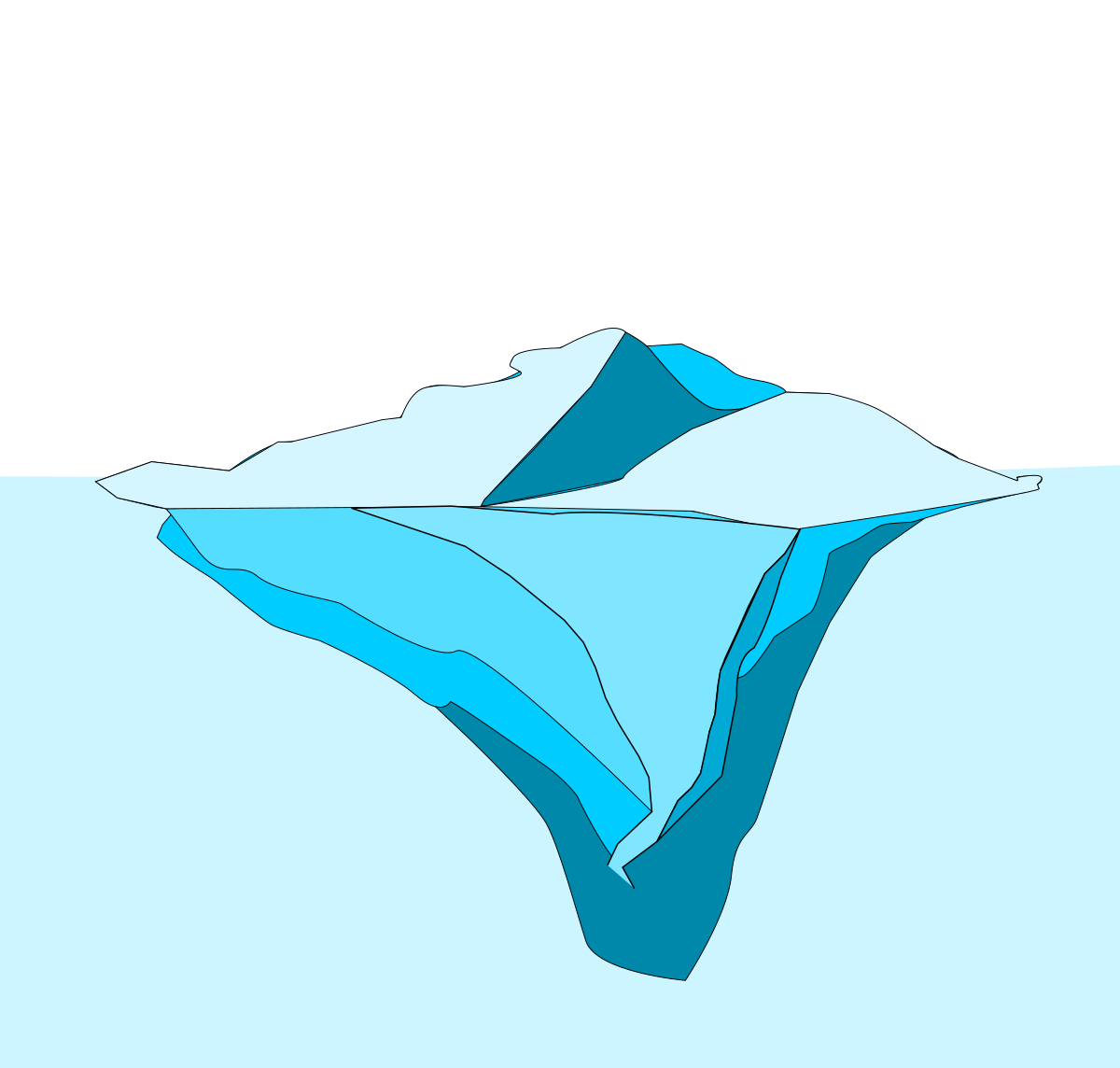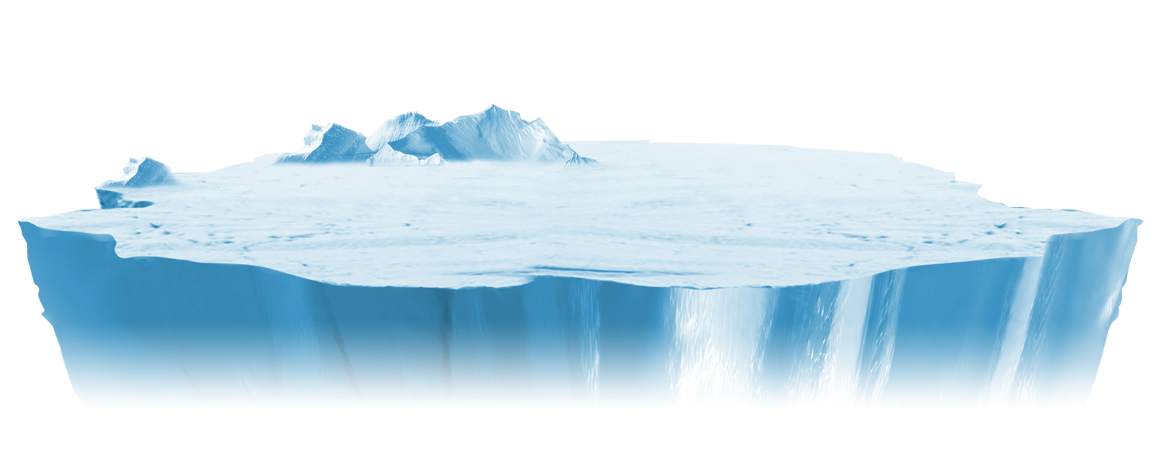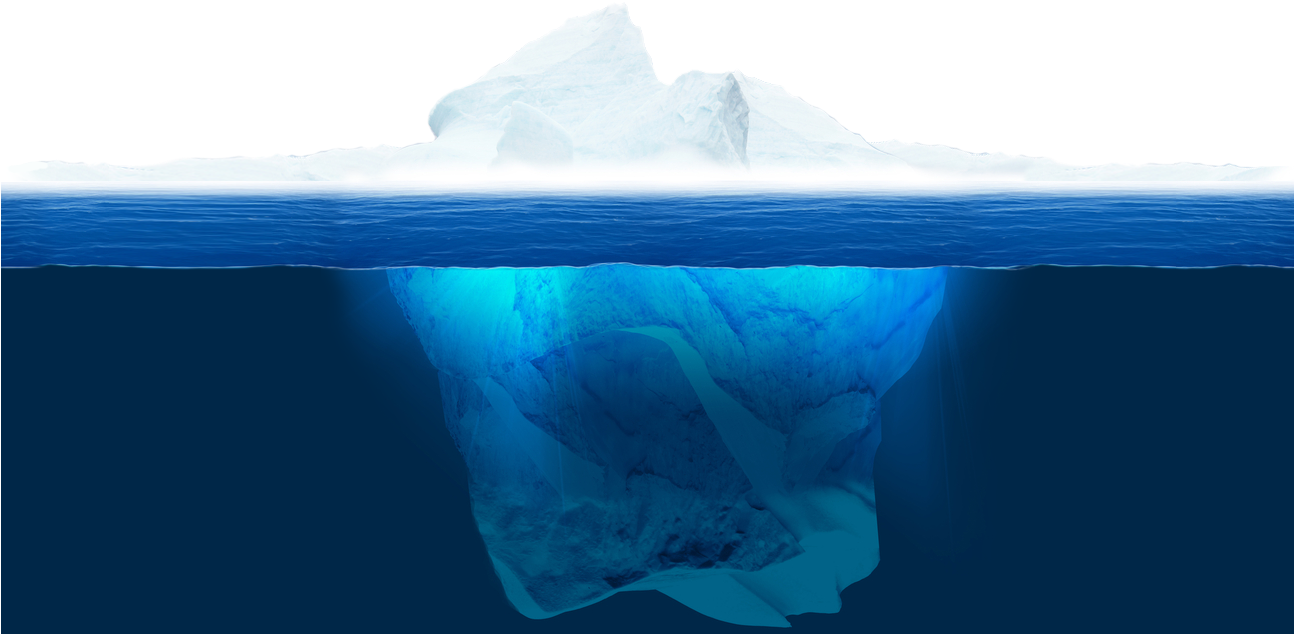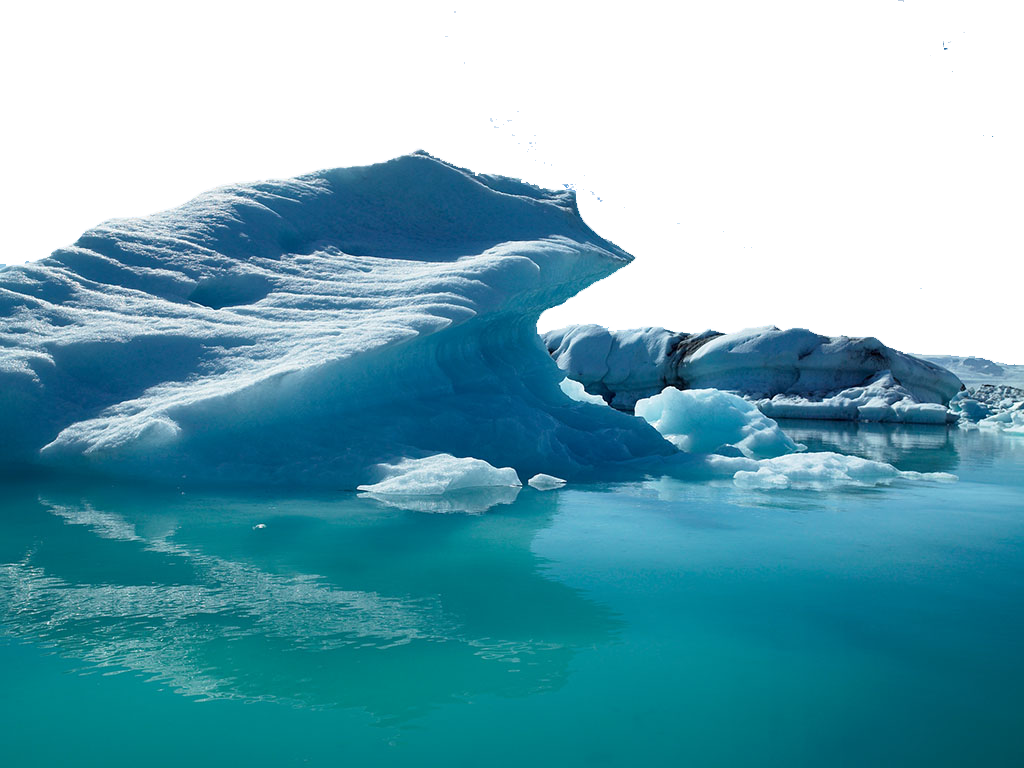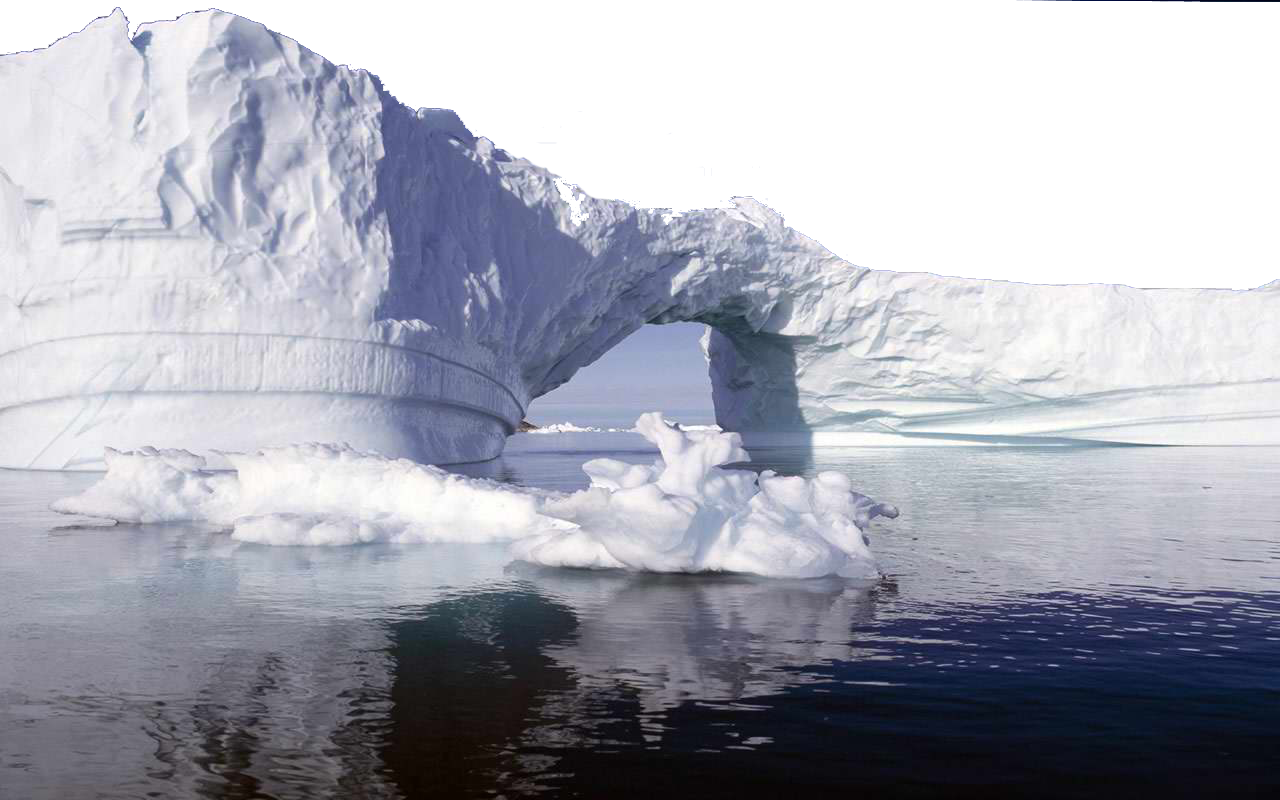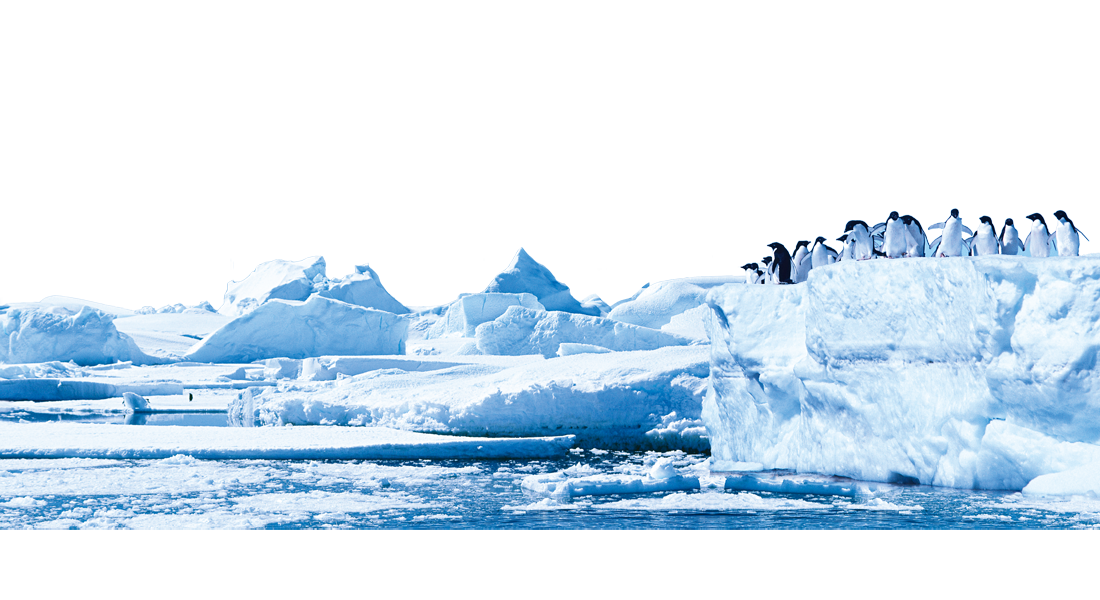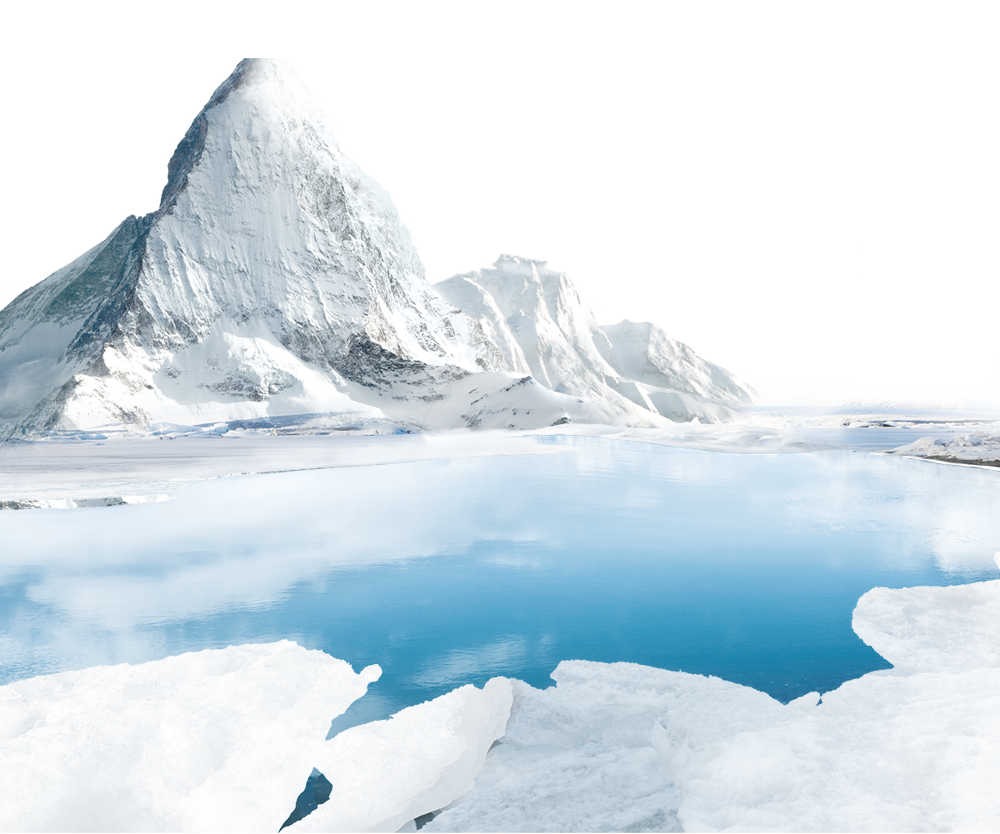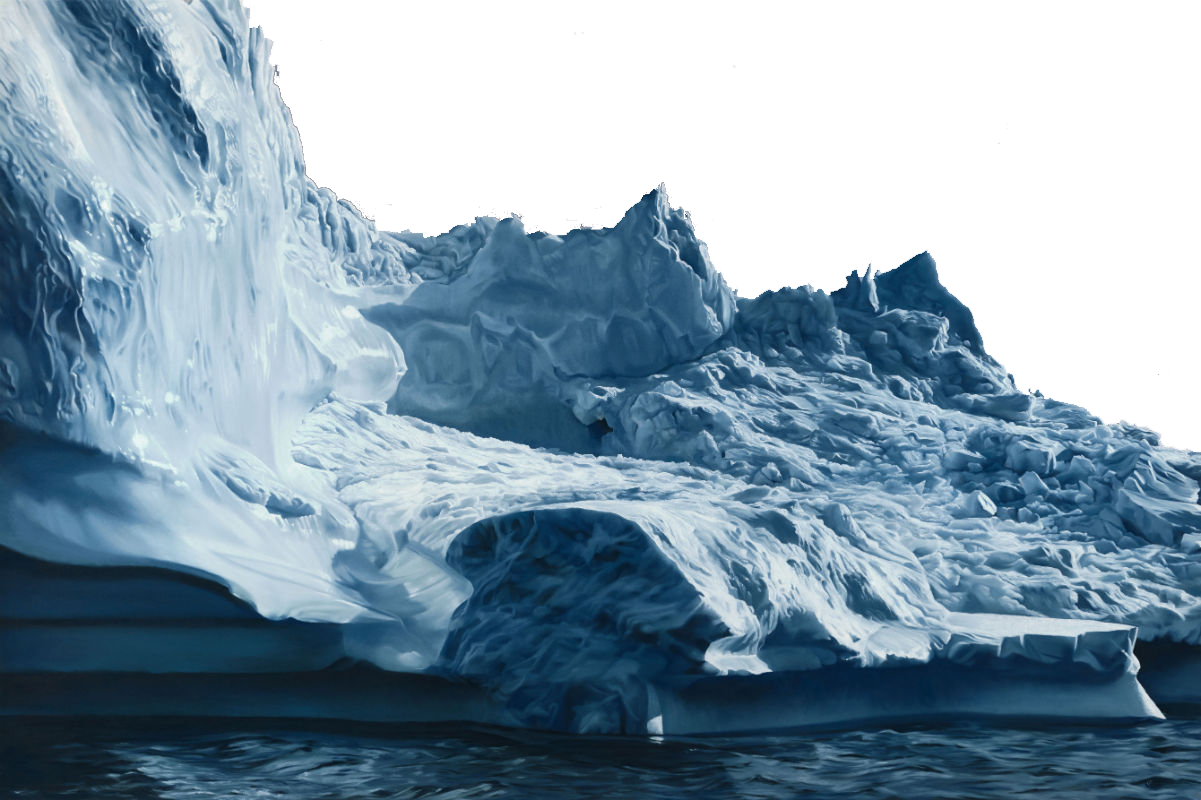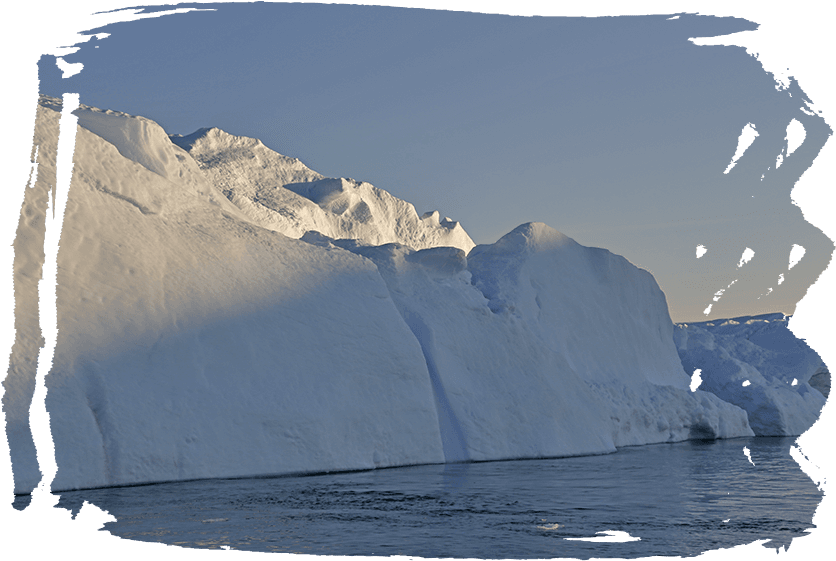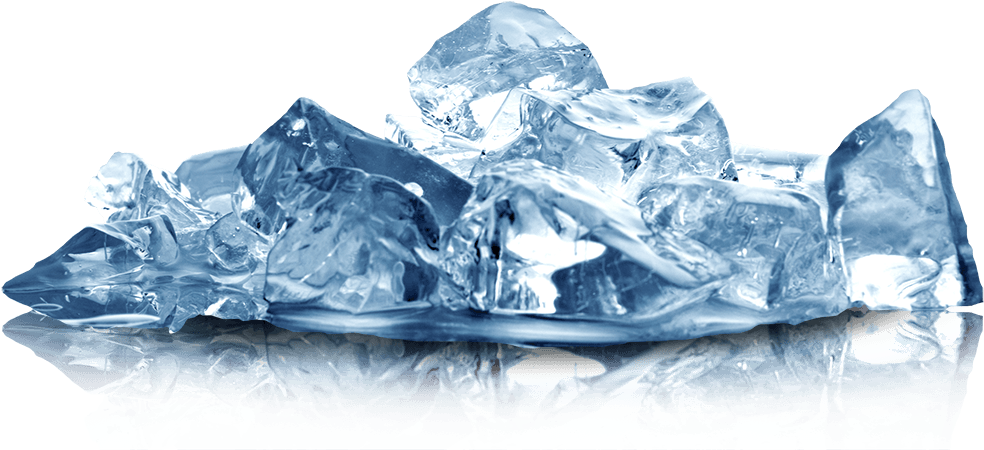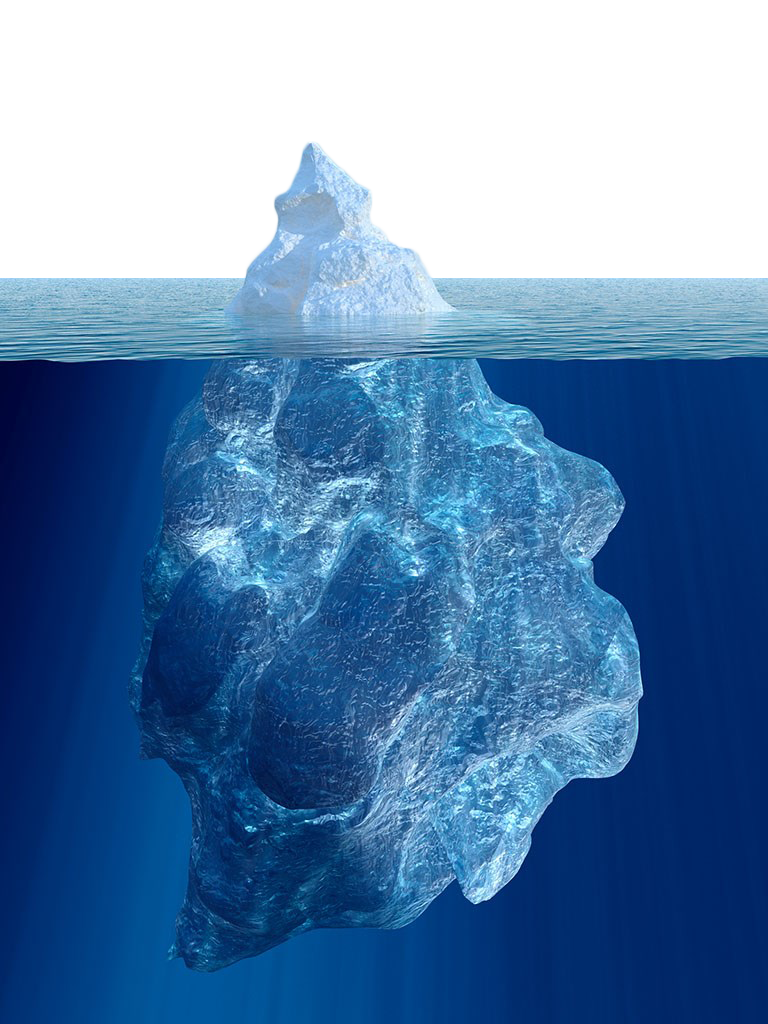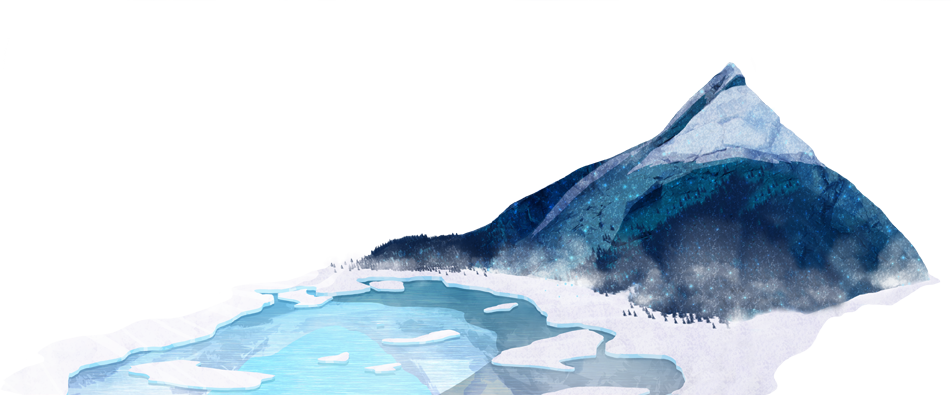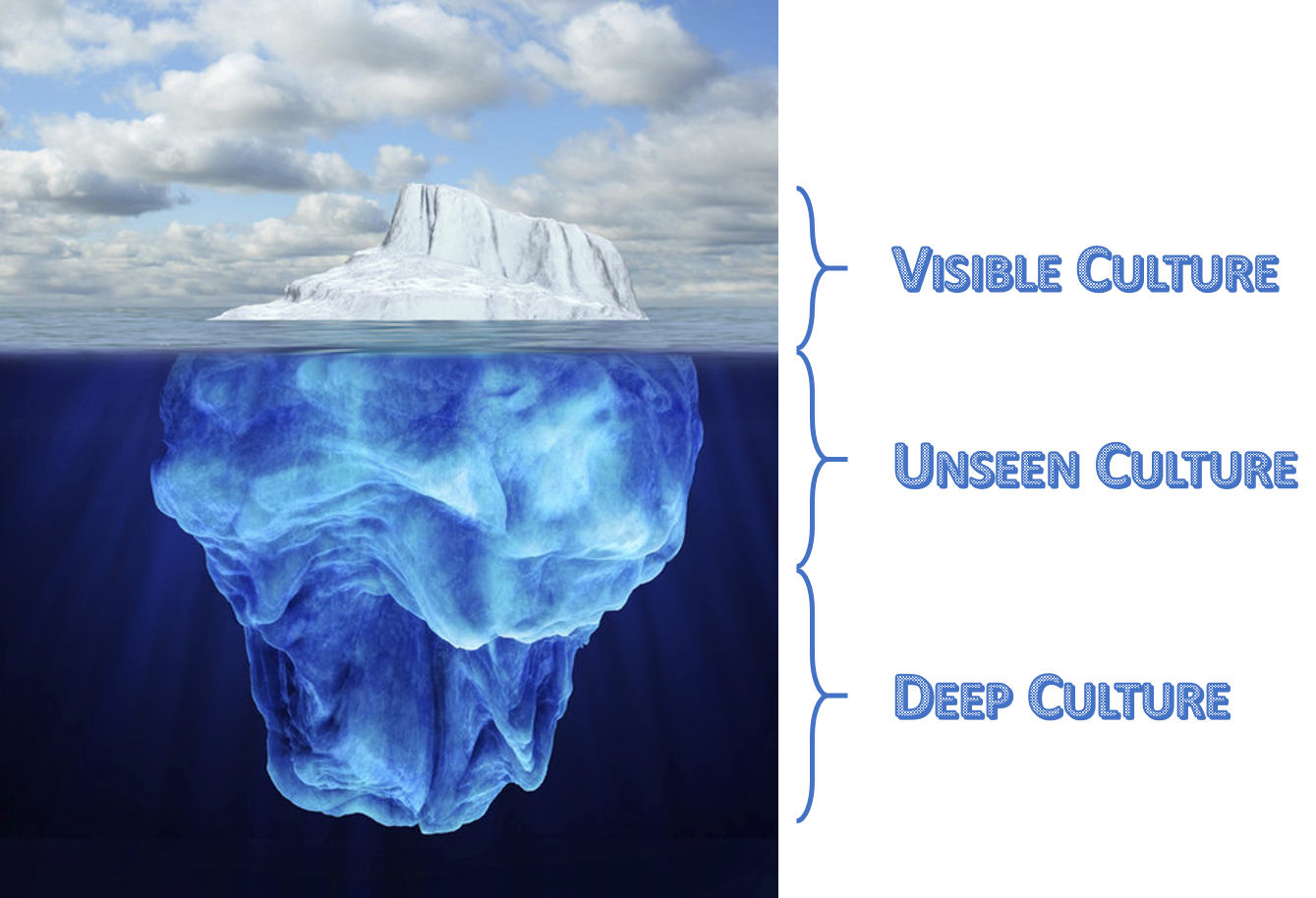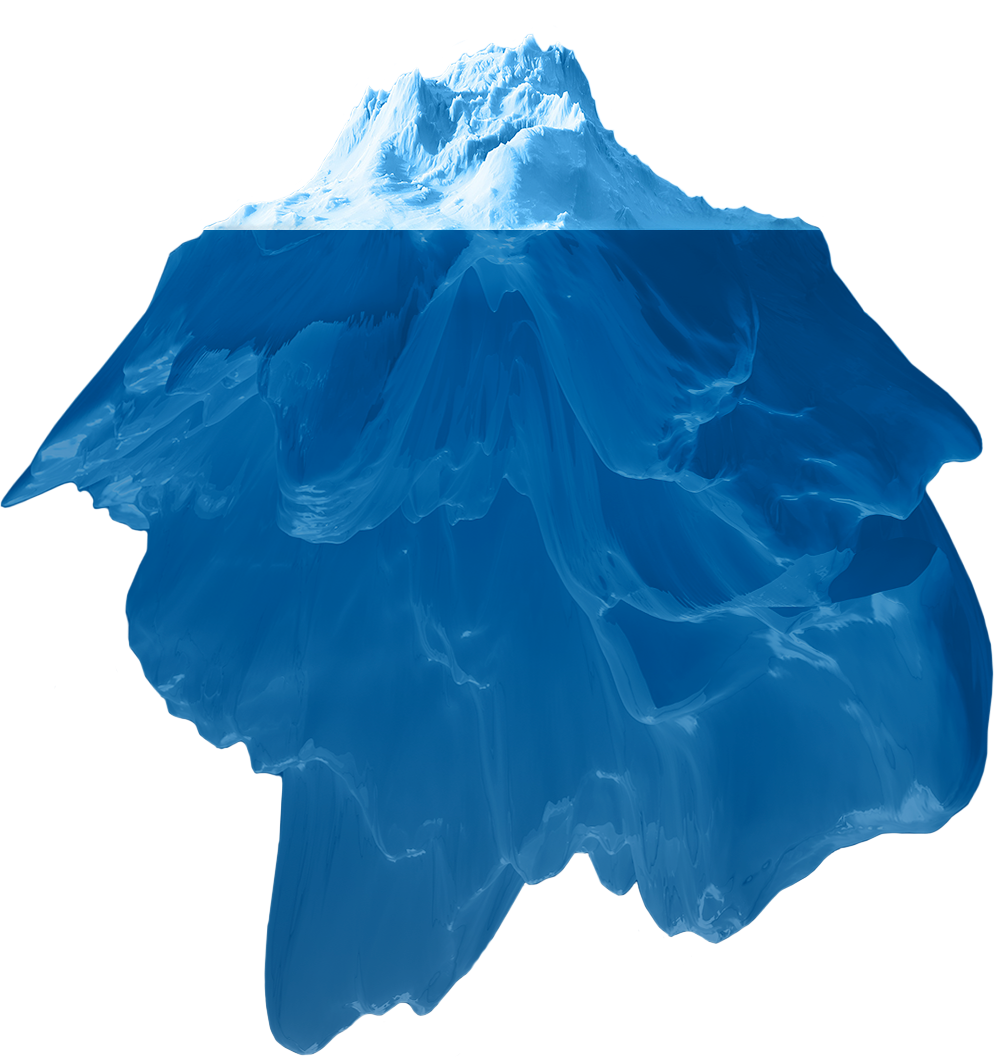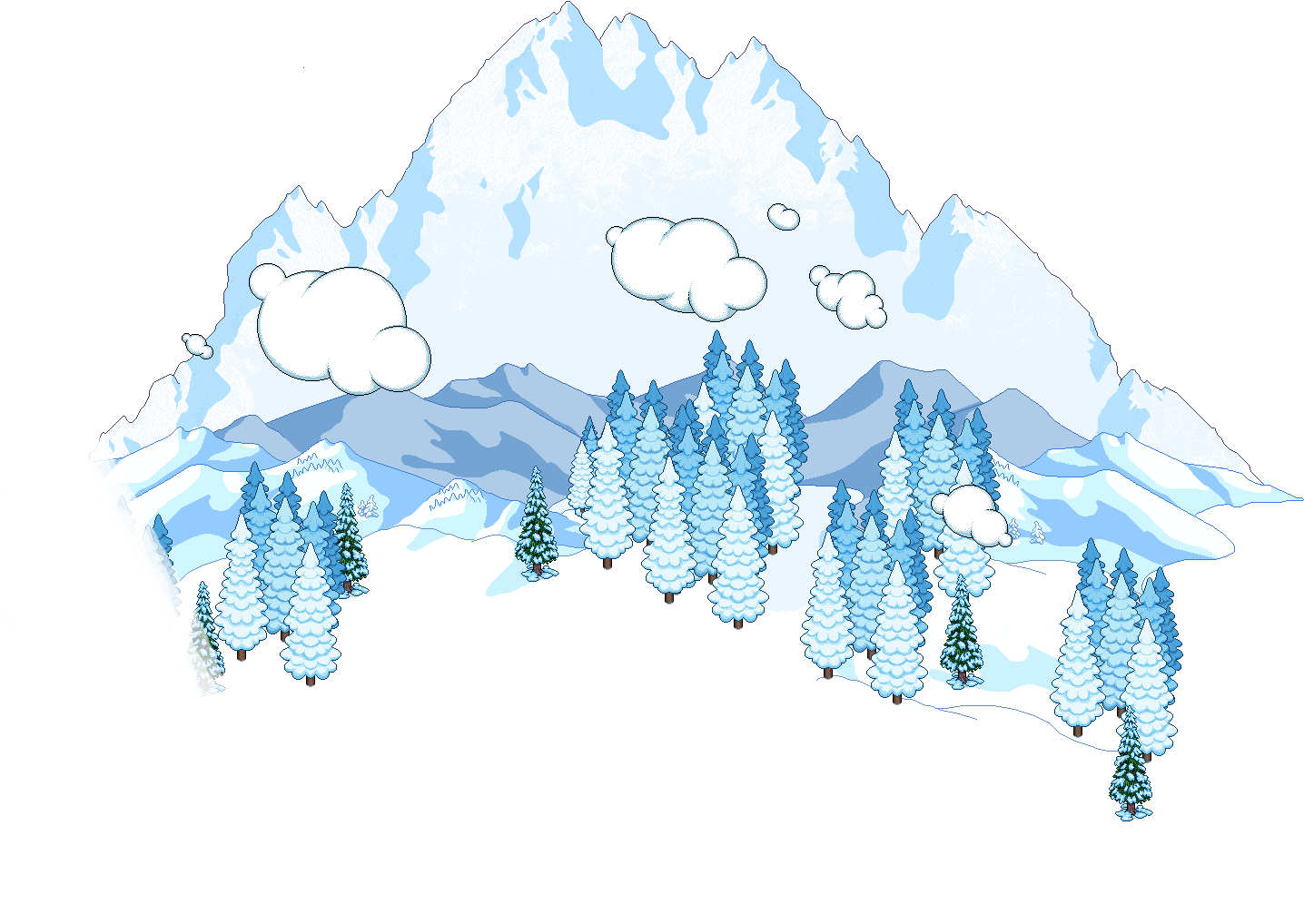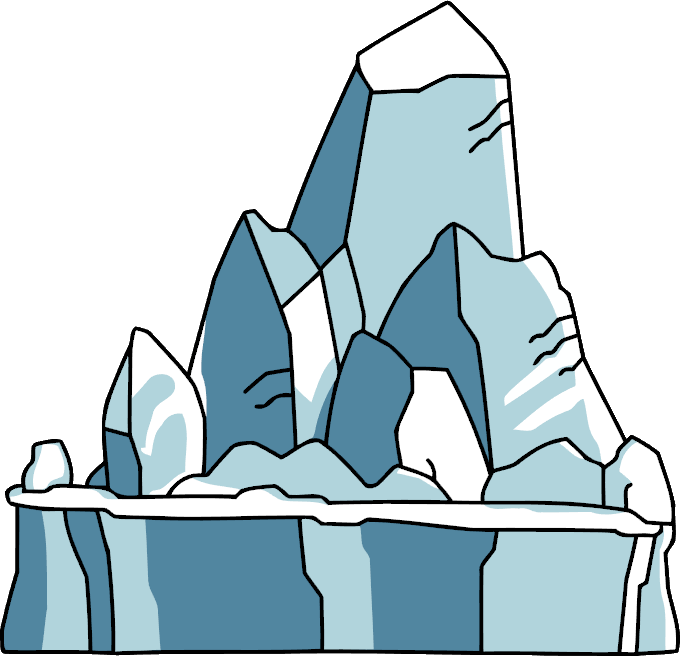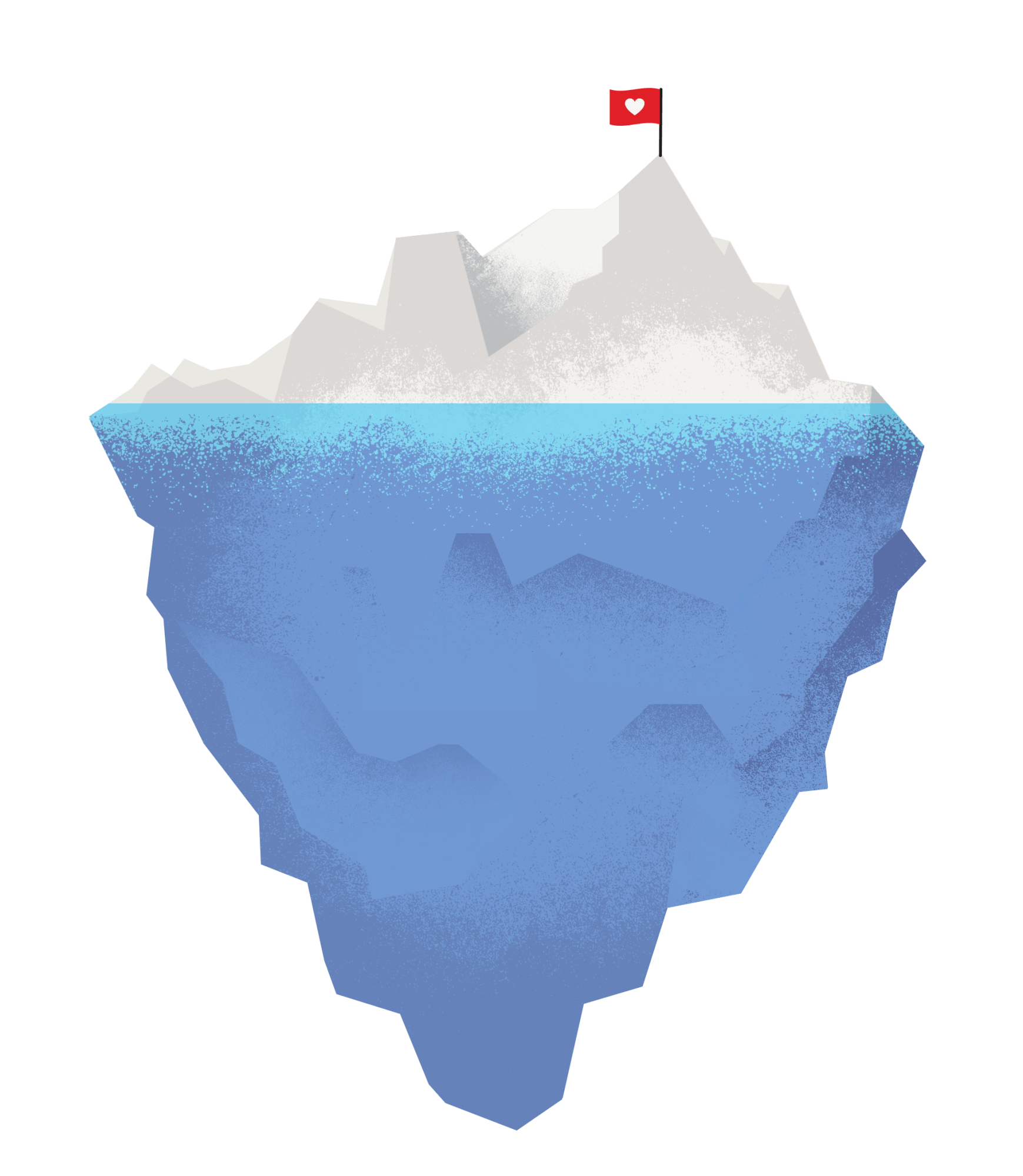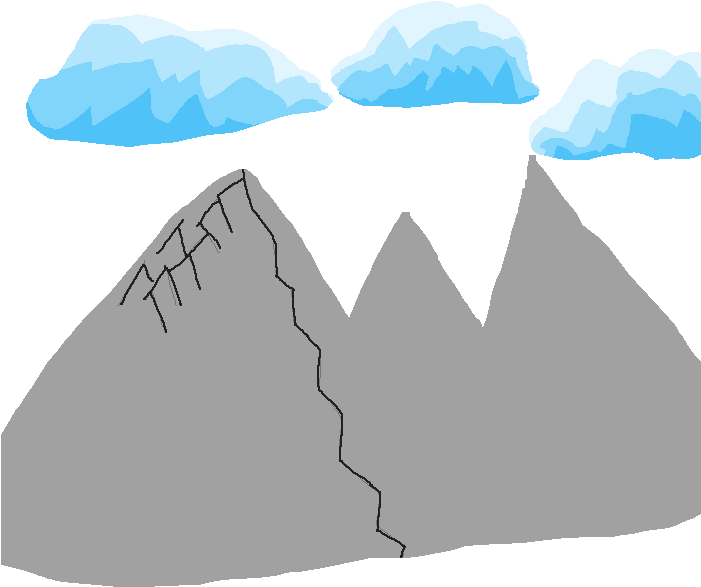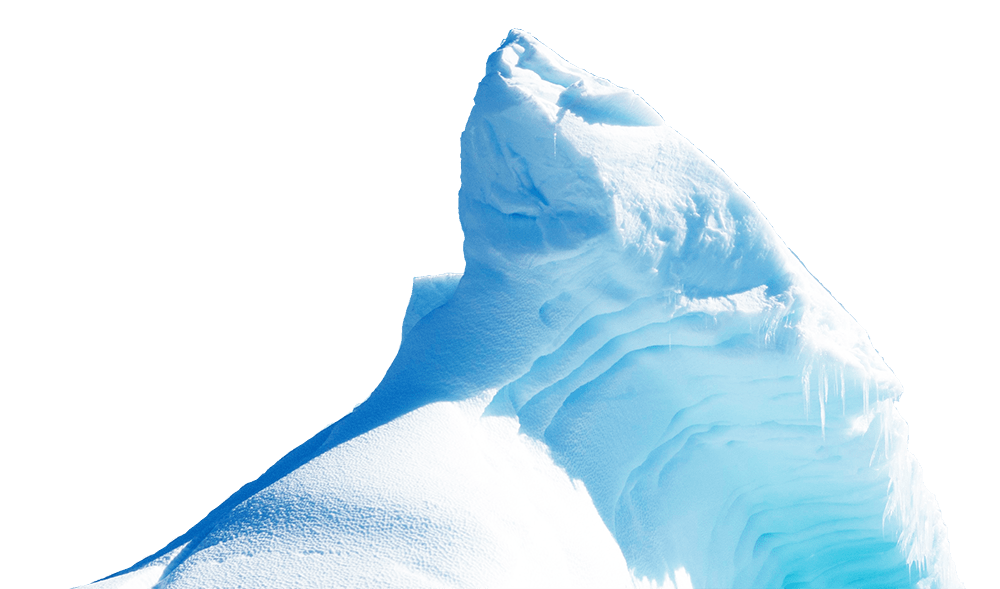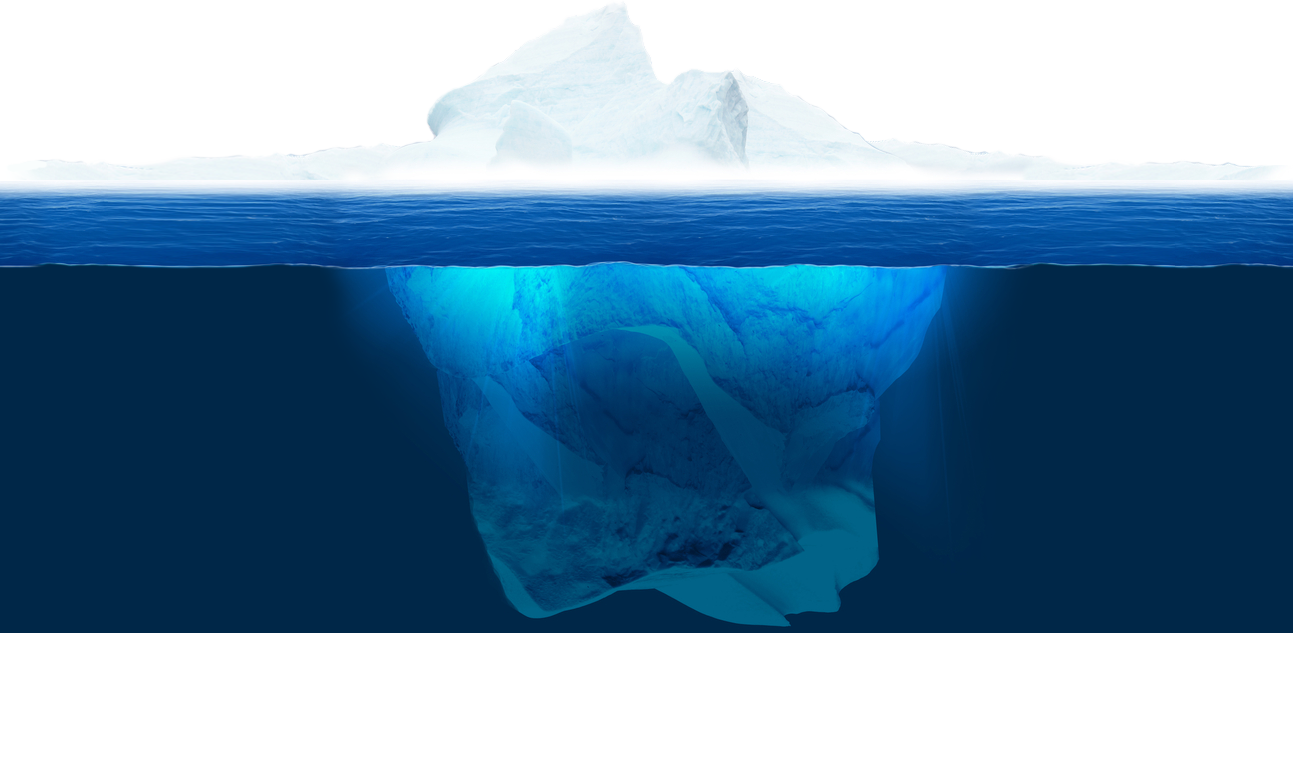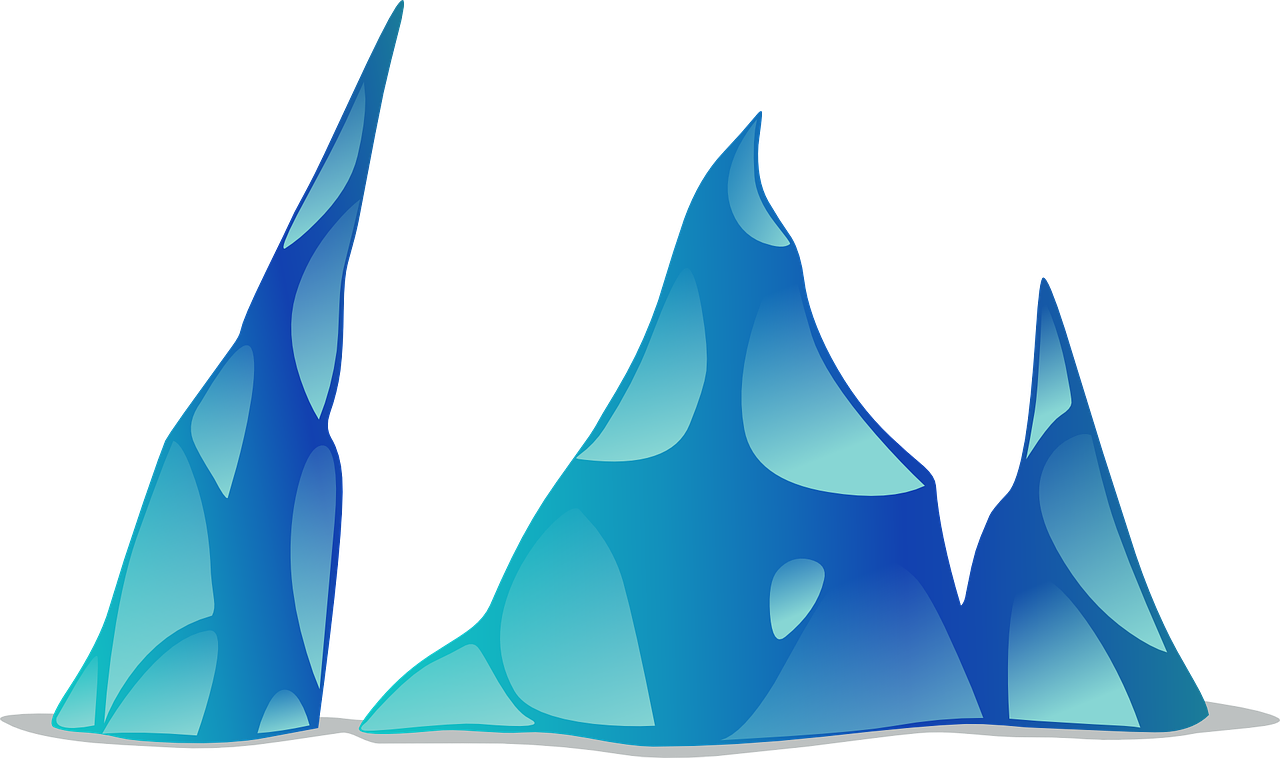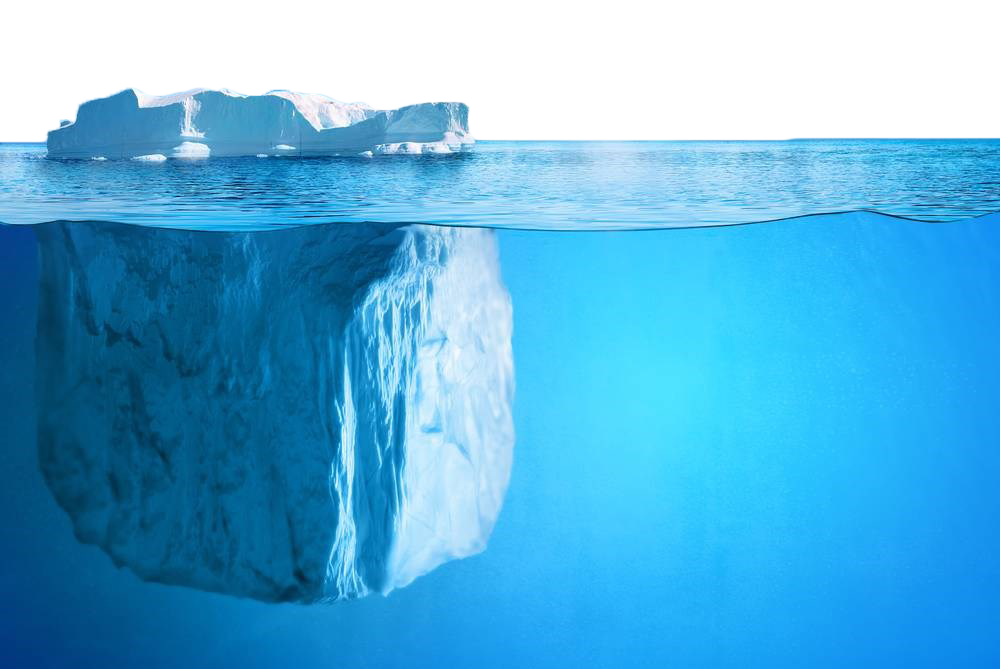Download top and best high-quality free Iceberg PNG Transparent Images backgrounds available in various sizes. To view the full PNG size resolution click on any of the below image thumbnail.
License Info: Creative Commons 4.0 BY-NC
A huge chunk of freshwater ice that has broken off a glacier or ice shelf and is floating freely in open (salt) water is known as an iceberg. “Growlers” or “bergy pieces” are little iceberg fragments that are dissolving.
Because so much of an iceberg lies under the surface, the phrase “tip of the iceberg” was coined to describe a small portion of a bigger, hidden problem. Icebergs are a significant marine danger. The RMS Titanic’s sinking in 1912 prompted the creation of the International Ice Patrol in 1914.
Icebergs are irregularly formed mounds calved by glaciers that face the open sea, such as those found in Greenland. Ice shelves in Antarctica calve enormous tabular (tabletop) icebergs. Iceberg B-15A, which broke off the Ross Ice Shelf in Antarctica in 2000, was the largest iceberg ever recorded.
The name iceberg comes from the Dutch word ijsberg, which literally means “ice mountain,” and is related to Danish isbjerg, German Eisberg, Low Saxon Iesbarg, and Swedish isberg.
Because pure ice has a density of 920 kg/m3 (57 lb/cu ft) and saltwater has a density of 1,025 kg/m3 (64 lb/cu ft), only roughly one-tenth of an iceberg’s bulk is above water (according to Archimedes’ Principle of Buoyancy). By looking at the section above the surface, it might be difficult to assess the shape of the underwater portion. Icebergs are sometimes likened to Manhattan in terms of size.
Icebergs may reach heights of more than 100 meters (300 feet) above the sea surface, and their mass can range from 100,000 to 10 million tons. “Bergy bits” refers to icebergs or floating ice that are less than 5 meters above the sea surface; “growlers” refers to icebergs or floating ice that are less than 1 meter. The tallest known iceberg in the North Atlantic, observed by the USCG icebreaker Eastwind in 1958, was 168 meters (551 feet) above sea level, taller than a 55-story skyscraper. The internal temperatures of these icebergs, which originate from the glaciers of western Greenland, can range from 15 to 20 degrees Celsius (5 to 4 degrees Fahrenheit).
Winds and currents tend to drive icebergs closer to coasts, where they might freeze into pack ice (a type of sea ice) or drift into shallow seas, where they can strike the seabed, causing a process known as seabed gouging.
The Ross Ice Shelf in Antarctica has calved, or split off, the world’s biggest icebergs. Iceberg B-15 spanned 295 by 37 kilometers (183 by 23 miles) and had a surface area of 11,000 square kilometers when it was observed by satellite in 2000. (4,200 sq mi). On November 12, 1956, the USS Glacier saw an Antarctic tabular iceberg with a surface area of about 31,000 square kilometers (12,000 square miles) 240 kilometers (150 miles) west of Scott Island in the South Pacific Ocean. Belgium was dwarfed by this iceberg.
A growler is a tiny iceberg that is less than 2 meters (6.6 feet) wide and floats with less than 1 meter (3.3 feet) above water. It is smaller than a bergy bit, which is often less than 5 meters (15 feet). Both are generated by icebergs that are dissolving.
Download Iceberg PNG images transparent gallery.
- Iceberg Underwater PNG HD Quality
Resolution: 662 × 496
Size: 18 KB
Image Format: .png
Download
- Iceberg Underwater Transparent PNG
Resolution: 800 × 800
Size: 547 KB
Image Format: .png
Download
- Iceberg Background PNG
Resolution: 899 × 367
Size: 293 KB
Image Format: .png
Download
- Iceberg Underwater Transparent File
Resolution: 2500 × 2092
Size: 294 KB
Image Format: .png
Download
- Iceberg Underwater PNG Free Download
Resolution: 1200 × 1144
Size: 81 KB
Image Format: .png
Download
- Iceberg Underwater PNG Image File
Resolution: 900 × 701
Size: 528 KB
Image Format: .png
Download
- Iceberg PNG Image
Resolution: 1165 × 475
Size: 301 KB
Image Format: .png
Download
- Iceberg PNG Photos
Resolution: 1300 × 599
Size: 567 KB
Image Format: .png
Download
- Iceberg Underwater PNG Picture
Resolution: 827 × 1079
Size: 128 KB
Image Format: .png
Download
- Iceberg Underwater PNG Photo Image
Resolution: 1294 × 634
Size: 550 KB
Image Format: .png
Download
- Iceberg Underwater Download Free PNG
Resolution: 1024 × 768
Size: 707 KB
Image Format: .png
Download
- Iceberg PNG Background
Resolution: 2659 × 839
Size: 116 KB
Image Format: .png
Download
- Iceberg Underwater PNG HD Background
Resolution: 1280 × 800
Size: 640 KB
Image Format: .png
Download
- Iceberg
Resolution: 1500 × 583
Size: 1032 KB
Image Format: .png
Download
- Iceberg PNG
Resolution: 1100 × 600
Size: 622 KB
Image Format: .png
Download
- Iceberg Underwater PNG Images HD
Resolution: 1000 × 834
Size: 852 KB
Image Format: .png
Download
- Iceberg Underwater PNG Photo
Resolution: 1201 × 800
Size: 1017 KB
Image Format: .png
Download
- Iceberg Underwater PNG Clipart
Resolution: 1001 × 819
Size: 139 KB
Image Format: .png
Download
- Iceberg PNG Pic
Resolution: 836 × 561
Size: 187 KB
Image Format: .png
Download
- Iceberg PNG File
Resolution: 850 × 387
Size: 365 KB
Image Format: .png
Download
- Iceberg Underwater PNG Image HD
Resolution: 984 × 450
Size: 240 KB
Image Format: .png
Download
- Iceberg Underwater PNG Image
Resolution: 2050 × 1001
Size: 114 KB
Image Format: .png
Download
- Iceberg Underwater PNG HD Image
Resolution: 768 × 1024
Size: 803 KB
Image Format: .png
Download
- Iceberg PNG Photo
Resolution: 951 × 395
Size: 289 KB
Image Format: .png
Download
- Iceberg PNG Cutout
Resolution: 2086 × 1789
Size: 63 KB
Image Format: .png
Download
- Iceberg Underwater No Background
Resolution: 1048 × 1222
Size: 467 KB
Image Format: .png
Download
- Iceberg Underwater Transparent Image
Resolution: 1265 × 402
Size: 159 KB
Image Format: .png
Download
- Iceberg Underwater PNG File
Resolution: 1339 × 914
Size: 1100 KB
Image Format: .png
Download
- Iceberg Underwater PNG Free Image
Resolution: 1007 × 1057
Size: 746 KB
Image Format: .png
Download
- Iceberg PNG Images
Resolution: 1436 × 1018
Size: 143 KB
Image Format: .png
Download
- Iceberg Transparent
Resolution: 680 × 656
Size: 38 KB
Image Format: .png
Download
- Iceberg Underwater PNG Images
Resolution: 726 × 800
Size: 27 KB
Image Format: .png
Download
- Iceberg Underwater Transparent
Resolution: 1515 × 1920
Size: 36 KB
Image Format: .png
Download
- Iceberg Underwater PNG
Resolution: 1739 × 2000
Size: 397 KB
Image Format: .png
Download
- Iceberg PNG Clipart
Resolution: 1920 × 1070
Size: 26 KB
Image Format: .png
Download
- Iceberg PNG Picture
Resolution: 1202 × 1725
Size: 198 KB
Image Format: .png
Download
- Iceberg PNG HD Image
Resolution: 1592 × 1920
Size: 50 KB
Image Format: .png
Download
- Iceberg PNG Image HD
Resolution: 1008 × 843
Size: 674 KB
Image Format: .png
Download
- Iceberg No Background
Resolution: 701 × 587
Size: 9 KB
Image Format: .png
Download
- Iceberg Underwater PNG Download Image
Resolution: 961 × 960
Size: 46 KB
Image Format: .png
Download
- Iceberg PNG Images HD
Resolution: 1000 × 589
Size: 164 KB
Image Format: .png
Download
- Iceberg PNG Free Image
Resolution: 1280 × 759
Size: 41 KB
Image Format: .png
Download
- Iceberg Underwater PNG Cutout
Resolution: 1293 × 762
Size: 568 KB
Image Format: .png
Download
- Iceberg Underwater PNG Photos
Resolution: 738 × 550
Size: 110 KB
Image Format: .png
Download
- Iceberg Underwater
Resolution: 1160 × 1162
Size: 77 KB
Image Format: .png
Download
- Iceberg Underwater PNG Pic
Resolution: 1078 × 1180
Size: 230 KB
Image Format: .png
Download
- Iceberg Underwater Background PNG
Resolution: 1280 × 758
Size: 236 KB
Image Format: .png
Download
- Iceberg PNG Image File
Resolution: 960 × 480
Size: 93 KB
Image Format: .png
Download
- Iceberg Underwater PNG Background
Resolution: 1000 × 669
Size: 508 KB
Image Format: .png
Download

